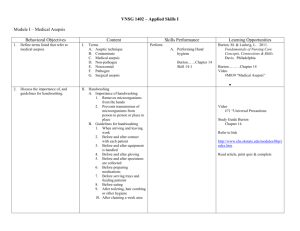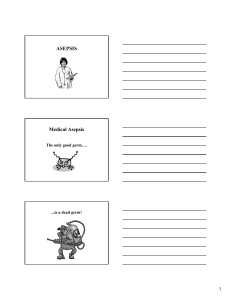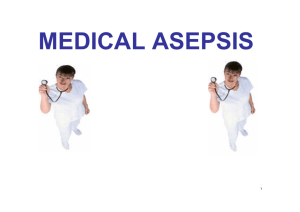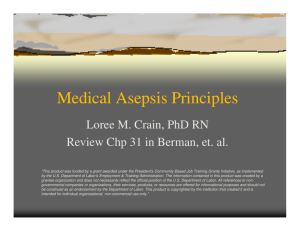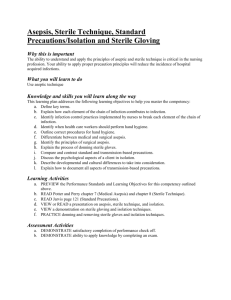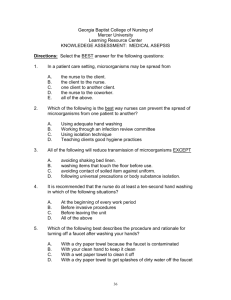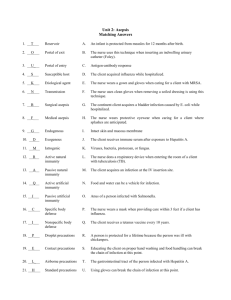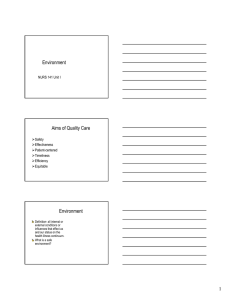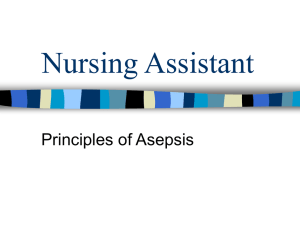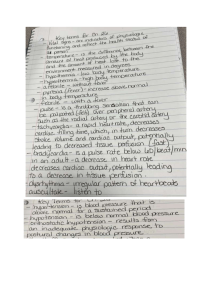Controlling Infection -
advertisement
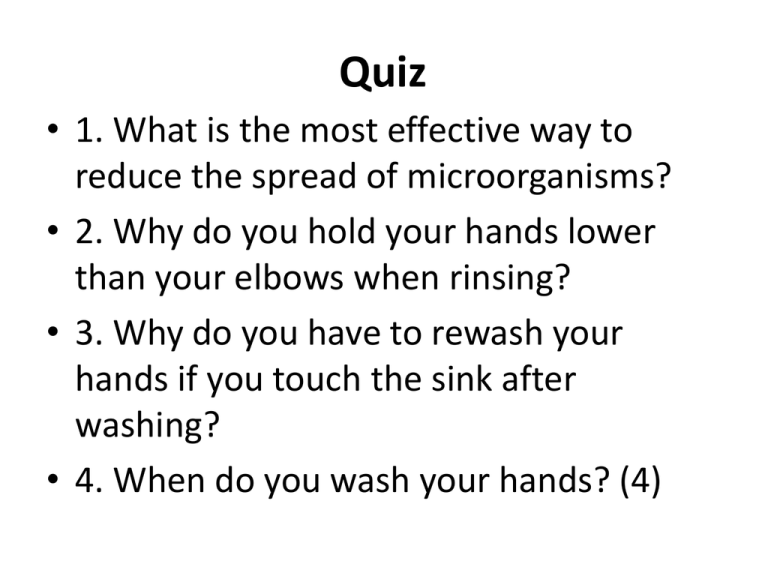
Quiz • 1. What is the most effective way to reduce the spread of microorganisms? • 2. Why do you hold your hands lower than your elbows when rinsing? • 3. Why do you have to rewash your hands if you touch the sink after washing? • 4. When do you wash your hands? (4) • 1. Handwashing • 2. prevents lather and water from running over arms and causing contamination • 3. touching a contaminated area re-contaminates your hands • 4. - before and after contact with a patient and their belongings - before and after eating - after using the bathroom - after handling any contaminated fluid or object •What is SEPSIS? • Potentially life threatening whole body infection, when the blood is overwhelmed by bacteria Controlling Infection - Asepsis (Unit 2) Asepsis • What is Asepsis? – Technique used to make the environment, the worker, and the patient as germ-free as possible • Why do we need Aseptic techniques? – Health care facilities are full of sick people and we do not want to get workers or other patients more sick because germs were passed around Asepsis • Aseptic Techniques Prevent: – Cross infection – Re-infection – Self-inoculation – Passing illnesses from patient to healthcare worker and healthcare worker to patient Asepsis • Aseptic Techniques Include: – Employees being clean and neat – Proper handling of all equipment – Using sterile procedures when necessary – Using proper cleaning solutions – Proper hand washing – Following Standard Precautions Asepsis • Standard Precautions – guidlines designed to reduce the risk of transmission of microorganisms from recognized and unrecognized sources in the hospital Asepsis • Standard Precautions – guidelines designed to reduce the risk of transmission of microorganisms from recognized and unrecognized sources in the hospital – established by OSHA Asepsis • Standard Precautions – Mandated that all employees with a risk of exposure to body fluids are provided training and immunization within 10 days of hire. – Must be • Offered a hepatitis B vaccine (HBV) at no charge • Trained to use the appropriate protective equipment ro prevent exposure to body fluids • Receive an annual update and review Asepsis • Standard Precautions – Provide protection from contact with blood, mucous membranes, non-intact skin, and all body fluids – Body fluids: • Blood • Pericardial fluid • Body fluids containing visible blood • Amniotic fluid • Tissue specimens • Cerebrospinal fluid • Semen • Vaginal Secretions • Interstitial Fluid • Pleural Fluid Asepsis • Standard Precautions – Infection with HBV and HIV occur through: • Direct injection of infected blood or a contaminated needle that punctures the skin • Contact of infected body fluids with mucous membranes • Sexual contact • Pregnancy – transmitted from infected mother to baby Asepsis • Controlling the Spread of Infection – Disinfection – using the proper cleaning solution to clean skin and equipment – Sterilization – process of killing microorganisms off items that are put into the body or around an open wound with the use of autoclaves
